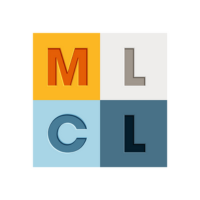The IRS issued final guidance regarding taxpayer cash and noncash charitable contribution deductions. The regulations are effective July 30, 2018, and clarify:
- Substantiation and recordkeeping requirements for cash contributions
- Substantiation requirements for noncash contributions
- Standards for qualified appraisals and appraisers
This blog discusses the concepts presented in the regulations, but taxpayers seeking to utilize tax benefits associated with their charitable contributions should always consult with a professional tax advisor, especially in light of the new rules under the Tax Cuts and Jobs Act of 2017.
General Cash Contribution Substantiation Requirements
Internal Revenue Code (“Code”) §170(f)(8) provides that no charitable deduction shall be allowed for any contribution of $250 or more unless the taxpayer substantiates the contribution contemporaneously by written acknowledgement from the donee organization. The regulations indicate emails are acceptable to substantiate monetary contributions. The written acknowledgement must state: (1) the amount of cash donated and a description (but not the value) of property donated; (2) a statement whether the donee exchanged any goods or services for the donation (i.e. a quid pro quo); and (3) a description and good faith estimate of the value of any goods or services conveyed by the donee to the donor, or if such goods or services consist solely of intangible religious benefits, a statement to that effect. Most charities voluntarily provide these statements to their donors as a courtesy, but donors must request them if otherwise not provided. It is incumbent upon the donor to produce substantiating documentation to support the deduction claimed if such deduction is challenged by the Internal Revenue Service.
Code §170(f)(17) imposes a recordkeeping requirement on the donor. Donors must maintain a bank record (such as a canceled check) as evidence of the gift. The record given must state the donee’s name, the contribution date, and the amount given. The regulations state that a blank pledge card is not suitable for substantiation purposes. Rather, the regulations provide that suitable bank records include a statement from a financial institution, an electronic funds transfer receipt, a canceled check, a scanned image (both sides) of a canceled check obtained from an online bank account service, or a credit card statement.
Donations of Clothing and Goods (Noncash Contributions)
If property, other than cash, valued at greater than $250 is donated to a charity, the same substantiation requirements apply as noted above for cash gifts. The taxpayer must provide evidence from the donee substantiating the gift. Taxpayers should also be aware that under Code §170(f)(16), no charitable contribution deduction is permitted for a contribution of clothing or a household item unless such items are in “good, used condition or better.”
For noncash donations valued between $500 and $5,000, in addition to obtaining contemporaneous written documentation for substantiation purposes from the donee, the donor must also complete and file IRS Form 8283 with the tax return on which the charitable donation deduction is claimed. The final regulations state that IRS Form 8283 by itself is not sufficient to meet the written substantiation requirements and therefore the taxpayer cannot rely upon the IRS Form 8283 to satisfy the documentation requirements.
Under Code §170(f)(11)(C), if donated property exceeds a value of $5,000, the donor must obtain a qualified appraisal for the property donated. This requirement is in addition to the requirements incumbent upon the taxpayer related to IRS Form 8283 and the contemporaneous documentation for substantiation purposes. The appraisal is not submitted to the IRS, but rather must be maintained by the taxpayer to verify the donation value if the taxpayer’s return is later audited. However, if the value of the donated property exceeds $500,000, then the qualified appraisal must be attached to the donor’s tax return on which the corresponding deduction is claimed. Such appraisals are subject to regulation as well, discussed below.
Code §170(f)(11)(F) states that for purposes of determining the applicability of the $500, $5,000, and $500,000 thresholds discussed above, similar items contributed by the taxpayer during the taxable year are treated as one aggregate property contribution. In determining whether a contribution meets the $250 threshold, regulation §1.170A-13(f)(1) provides that separate contributions of similar items made during the tax year are not combined, but rather are treated as separate property contributions.
Qualified Appraisers and Appraisals
Code §170(f)(11)(E)(i) states that a qualified appraisal is one that is conducted by a qualified appraiser in accordance with generally accepted appraisal standards. The proposed regulations defined “generally accepted appraisal standards” as “the substance and principles of the Uniform Standards of Professional Appraisal Practice [USPAP], as developed by the Appraisal Standards Board and the Appraisal Foundation.” (See Proposed Regulation §1.170A-17(a)(2)). The IRS believes flexibility in conforming with the appraisal standards is important and therefore the final regulations state that compliance with the “substance and principles” of the USPAP is proper, as opposed to mandating strict compliance with USPAP. In other words, the standards of the proposed regulation were maintained in the final regulations.
As to an appraiser’s qualifications, the regulations focus on education and experience. Appraisers meet the required qualification thresholds by having both the appropriate education and relevant experience. The regulations require the appraiser’s education and experience must be verifiable. Proposed regulation §1.170A-17(b)(2) provided that an appraiser is treated as having proper education and experience if such person has successfully completed professional or college coursework in valuing the property subject to appraisal and has two or more years of experience or otherwise has obtained a recognized appraiser designation. The final regulations do not adopt a more stringent standard for an appraiser’s education and experience. The regulations clarify that an appraiser’s mere attendance at a training event that does not include a final examination is not sufficient evidence of successful coursework completion. The IRS demands something more meaningful. The appraiser must be able to produce evidence of successful completion in their course of studies, which may be satisfied, for example, by a final examination.
Conclusion
Although the concept of making a charitable contribution should be simple, it can become complicated for tax purposes, especially as the dollar value of the gift becomes significant. If one is contemplating a large charitable donation, one should consult with a tax attorney first to confirm the donation is properly documented for tax deduction purposes. Contact one of our tax attorneys to discuss your charitable giving plans and how we may be of assistance to confirm appropriate tax compliance.

